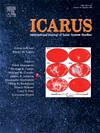Preliminary investigation of debris propagation dynamics in the Jovian system using the circular restricted 3- and N-body problems
IF 2.5
2区 物理与天体物理
Q2 ASTRONOMY & ASTROPHYSICS
引用次数: 0
Abstract
Jupiter’s many moons and the potentiality for water and life on these celestial bodies have significantly increased interest in the Jovian system. Missions to the Jovian system aim to limit “forward contamination” caused by human-made debris in order to preserve these moons for scientific discovery and exploration. Understanding the behavior and dynamics of debris in the system is vital to ensure limited impacts on the moons in the event of a debris-causing mishap. Additionally, the Jovian system presents highly complex dynamics based on the masses of the Galilean moons of Io, Europa, Ganymede, and Callisto. Incorporating the gravitational perturbations due to these additional system bodies ensures results that more accurately reflect real-world conditions. The Circular Restricted 3-Body Problem (CR3BP) and Circular Restricted N-Body Problem (CRNBP) may be used to propagate the motion of debris in the region, and this paper investigates the debris propagation dynamics associated with a catastrophic spacecraft breakup event occurring along trajectories within the orbital zone of Jupiter’s inner and Galilean moons. The NASA Standard Breakup Model (SBM) is used as the statistical means for debris generation for all analyses. This research presents four sample trajectories propagated using both the CR3BP and CRNBP models for comparison. Impacts on each of the four Galilean moons and four additional inner Jovian moons are analyzed for each sample trajectory case using 100 trials of the NASA SBM for each test. Preliminary results demonstrate that debris is mitigated in the out-of-plane and Europa-centric cases, while tested resonant trajectories result in up to 15% of produced debris impacting celestial bodies.
用圆形受限3体和n体问题初步研究木星系统中碎片传播动力学
木星的许多卫星以及这些天体上存在水和生命的可能性大大增加了人们对木星系统的兴趣。前往木星系统的任务旨在限制人造碎片造成的“前方污染”,以保护这些卫星,供科学发现和探索之用。了解系统中碎片的行为和动力学对于确保在发生碎片导致的事故时对卫星的影响有限至关重要。此外,木星系统表现出高度复杂的动力学,这是基于伽利略卫星木卫一、木卫二、木卫三和木卫四的质量。将这些额外的系统体引起的引力扰动结合起来,可以确保结果更准确地反映现实世界的情况。圆形受限3体问题(CR3BP)和圆形受限n体问题(CRNBP)可用于传播碎片在该区域的运动,本文研究了发生在木星内卫星和伽利略卫星轨道区域轨迹上的灾难性航天器解体事件相关的碎片传播动力学。NASA标准破碎模型(SBM)被用作所有分析中产生碎片的统计手段。本研究提出了使用CR3BP和CRNBP模型传播的四种样本轨迹进行比较。对四颗伽利略卫星和另外四颗木星内部卫星的影响进行了分析,对每个样本轨迹案例进行了100次NASA SBM试验。初步结果表明,在面外和以木卫二为中心的情况下,碎片被减轻了,而经过测试的共振轨迹导致高达15%的产生碎片撞击天体。
本文章由计算机程序翻译,如有差异,请以英文原文为准。
求助全文
约1分钟内获得全文
求助全文
来源期刊

Icarus
地学天文-天文与天体物理
CiteScore
6.30
自引率
18.80%
发文量
356
审稿时长
2-4 weeks
期刊介绍:
Icarus is devoted to the publication of original contributions in the field of Solar System studies. Manuscripts reporting the results of new research - observational, experimental, or theoretical - concerning the astronomy, geology, meteorology, physics, chemistry, biology, and other scientific aspects of our Solar System or extrasolar systems are welcome. The journal generally does not publish papers devoted exclusively to the Sun, the Earth, celestial mechanics, meteoritics, or astrophysics. Icarus does not publish papers that provide "improved" versions of Bode''s law, or other numerical relations, without a sound physical basis. Icarus does not publish meeting announcements or general notices. Reviews, historical papers, and manuscripts describing spacecraft instrumentation may be considered, but only with prior approval of the editor. An entire issue of the journal is occasionally devoted to a single subject, usually arising from a conference on the same topic. The language of publication is English. American or British usage is accepted, but not a mixture of these.
 求助内容:
求助内容: 应助结果提醒方式:
应助结果提醒方式:


